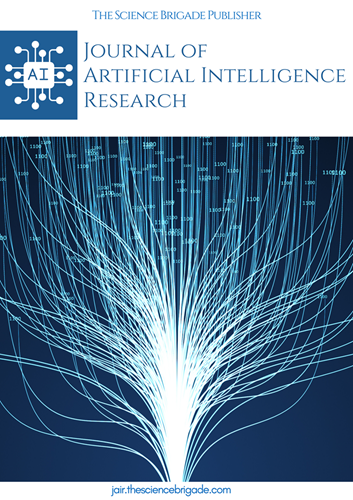Deep Learning and Computer Vision for Visual Security Monitoring in DevOps Environments
Keywords:
Deep learning, computer vision, visual security monitoring, DevOps, threat detectionAbstract
The integration of deep learning and computer vision technologies has become increasingly significant in enhancing visual security monitoring within DevOps environments. With the rapid digitization of IT systems and data centers, traditional security measures often fall short in addressing the complexities and threats posed by cyber-attacks. This paper discusses the application of deep learning models in automating threat detection by analyzing visual data streams generated from surveillance systems. By leveraging advanced algorithms, DevOps teams can enhance situational awareness, quickly identify anomalies, and respond to potential threats effectively. The discussion includes methodologies for implementing these technologies, the challenges faced, and potential future developments in visual security monitoring. The paper aims to provide insights into how DevOps teams can harness the power of deep learning and computer vision to create more secure and resilient IT environments.
References
Gayam, Swaroop Reddy. "Deep Learning for Predictive Maintenance: Advanced Techniques for Fault Detection, Prognostics, and Maintenance Scheduling in Industrial Systems." Journal of Deep Learning in Genomic Data Analysis 2.1 (2022): 53-85.
George, Jabin Geevarghese. "Advancing Enterprise Architecture for Post-Merger Financial Systems Integration in Capital Markets laying the Foundation for Machine Learning Application." Australian Journal of Machine Learning Research & Applications 3.2 (2023): 429-475.
Yellepeddi, Sai Manoj, et al. "AI-Powered Intrusion Detection Systems: Real-World Performance Analysis." Journal of AI-Assisted Scientific Discovery 4.1 (2024): 279-289.
Nimmagadda, Venkata Siva Prakash. "Artificial Intelligence for Supply Chain Visibility and Transparency in Retail: Advanced Techniques, Models, and Real-World Case Studies." Journal of Machine Learning in Pharmaceutical Research 3.1 (2023): 87-120.
Putha, Sudharshan. "AI-Driven Predictive Maintenance for Smart Manufacturing: Enhancing Equipment Reliability and Reducing Downtime." Journal of Deep Learning in Genomic Data Analysis 2.1 (2022): 160-203.
Sahu, Mohit Kumar. "Advanced AI Techniques for Predictive Maintenance in Autonomous Vehicles: Enhancing Reliability and Safety." Journal of AI in Healthcare and Medicine 2.1 (2022): 263-304.
Kondapaka, Krishna Kanth. "AI-Driven Predictive Maintenance for Insured Assets: Advanced Techniques, Applications, and Real-World Case Studies." Journal of AI in Healthcare and Medicine 1.2 (2021): 146-187.
Kasaraneni, Ramana Kumar. "AI-Enhanced Telematics Systems for Fleet Management: Optimizing Route Planning and Resource Allocation." Journal of AI in Healthcare and Medicine 1.2 (2021): 187-222.
Pattyam, Sandeep Pushyamitra. "Artificial Intelligence in Cybersecurity: Advanced Methods for Threat Detection, Risk Assessment, and Incident Response." Journal of AI in Healthcare and Medicine 1.2 (2021): 83-108.
Alluri, Venkat Rama Raju, et al. "Automated Testing Strategies for Microservices: A DevOps Approach." Distributed Learning and Broad Applications in Scientific Research 4 (2018): 101-121.
Y. Zhang and Q. Yang, "A survey on multi-task learning," IEEE Transactions on Knowledge and Data Engineering, vol. 34, no. 12, pp. 5586-5609, Dec. 2022.
Y. Wang, Q. Chen, and W. Zhu, "Zero-shot learning: A comprehensive review," IEEE Transactions on Neural Networks and Learning Systems, vol. 30, no. 7, pp. 2172-2188, Jul. 2019.
D. Bahdanau, K. Cho, and Y. Bengio, "Neural machine translation by jointly learning to align and translate," in Proceedings of the 3rd International Conference on Learning Representations (ICLR), 2015.
M. I. Jordan and T. M. Mitchell, "Machine learning: Trends, perspectives, and prospects," Science, vol. 349, no. 6245, pp. 255-260, 2015.
J. Devlin, M. W. Chang, K. Lee, and K. Toutanova, "BERT: Pre-training of deep bidirectional transformers for language understanding," in Proceedings of the 2019 Conference of the North American Chapter of the Association for Computational Linguistics: Human Language Technologies, 2019, pp. 4171-4186.
Downloads
Published
How to Cite
Issue
Section
License

This work is licensed under a Creative Commons Attribution-NonCommercial-ShareAlike 4.0 International License.
License Terms
Ownership and Licensing:
Authors of this research paper submitted to the journal owned and operated by The Science Brigade Group retain the copyright of their work while granting the journal certain rights. Authors maintain ownership of the copyright and have granted the journal a right of first publication. Simultaneously, authors agreed to license their research papers under the Creative Commons Attribution-NonCommercial-ShareAlike 4.0 International (CC BY-NC-SA 4.0) License.
License Permissions:
Under the CC BY-NC-SA 4.0 License, others are permitted to share and adapt the work, as long as proper attribution is given to the authors and acknowledgement is made of the initial publication in the Journal. This license allows for the broad dissemination and utilization of research papers.
Additional Distribution Arrangements:
Authors are free to enter into separate contractual arrangements for the non-exclusive distribution of the journal's published version of the work. This may include posting the work to institutional repositories, publishing it in journals or books, or other forms of dissemination. In such cases, authors are requested to acknowledge the initial publication of the work in this Journal.
Online Posting:
Authors are encouraged to share their work online, including in institutional repositories, disciplinary repositories, or on their personal websites. This permission applies both prior to and during the submission process to the Journal. Online sharing enhances the visibility and accessibility of the research papers.
Responsibility and Liability:
Authors are responsible for ensuring that their research papers do not infringe upon the copyright, privacy, or other rights of any third party. The Science Brigade Publishers disclaim any liability or responsibility for any copyright infringement or violation of third-party rights in the research papers.




